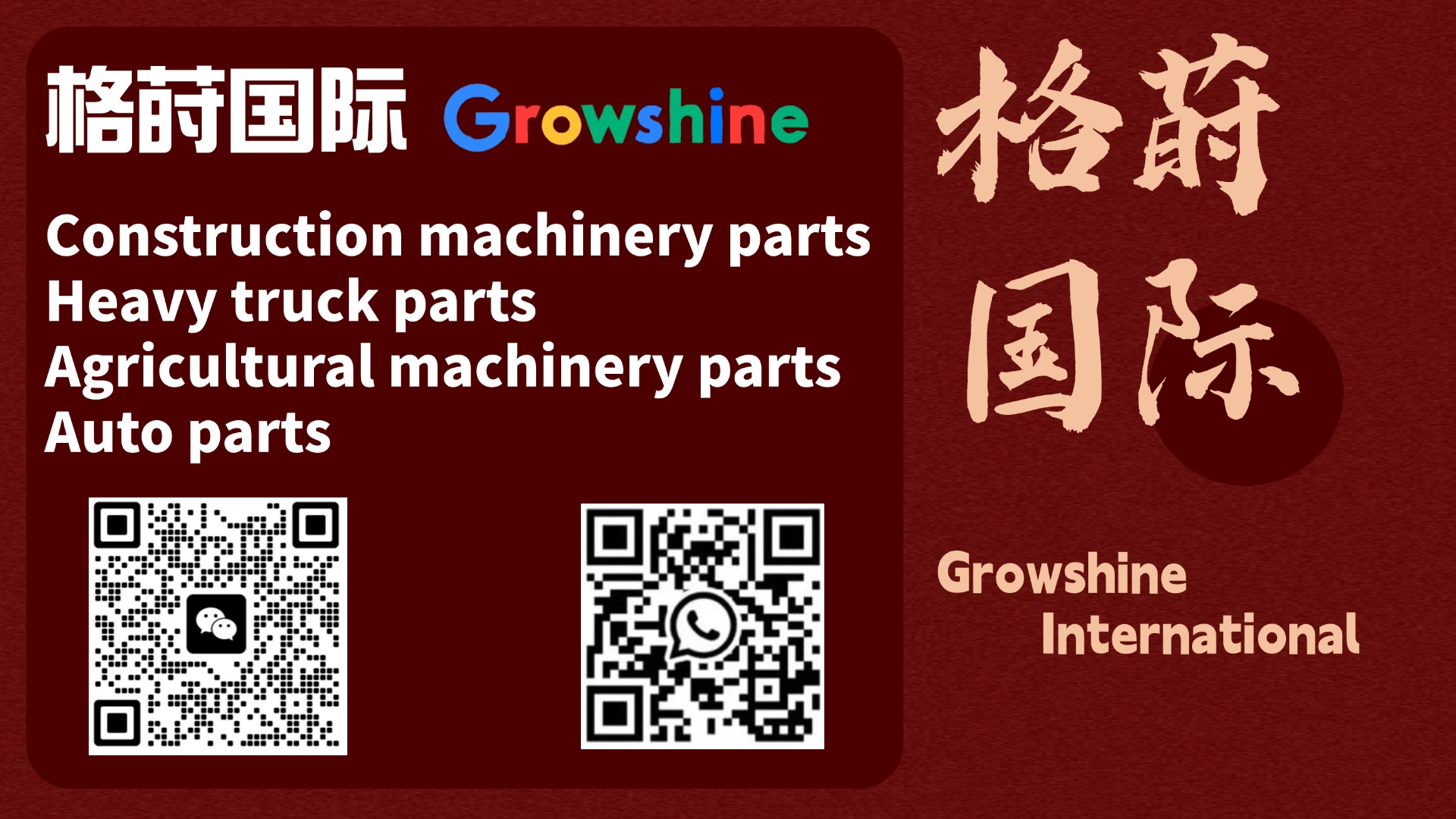
Your Reliable Source for Caterpillar CAT Engine Parts
Product Highlights
Accessory Glossary
安装部位 (Installation Location): 活塞下方,缸体 (Below Piston, Cylinder Block)
作用 (Function): 喷射机油冷却活塞,降低活塞温度 (Sprays oil to cool the piston, reducing piston temperature)
例如 (Example): Caterpillar CAT C9 发动机的 活塞冷却油喷嘴 (Piston Cooling Oil Jet) 197-9367
安装部位 (Installation Location): 发动机前端,连接曲轴和附件 (Front of Engine, connecting crankshaft and accessories)
作用 (Function): 传递动力,驱动风扇、水泵、发电机等附件 (Transmit power, drive accessories like fan, water pump, alternator)
例如 (Example): Mitsubishi Caterpillar CAT 发动机的 V型皮带 (V Belt) 37549-06670
安装部位 (Installation Location): 气缸盖,气门机构 (Cylinder Head, Valve Mechanism)
作用 (Function): 控制气门开启和关闭 (Control valve opening and closing)
例如 (Example): Caterpillar CAT C9 发动机的 摇臂 (Rocker Arm) 242-0328
安装部位 (Installation Location): 燃油管路中 (Fuel Line)
作用 (Function): 分离燃油中的水分和杂质,保护燃油系统 (Separate water and impurities from fuel, protect fuel system)
例如 (Example): Caterpillar CAT 3406C 发动机的 燃油滤清器油水分离器 (Fuel Filter Water Separator) 233-7973
安装部位 (Installation Location): 发动机冷却水套 (Engine Coolant Jacket)
作用 (Function): 检测冷却液温度,反馈给ECU控制系统 (Detect coolant temperature, feedback to ECU control system)
例如 (Example): Caterpillar CAT 3054E 发动机的 水温传感器 (Water Temperature Sensor) 268-4360
安装部位 (Installation Location): 曲轴和活塞之间 (Between Crankshaft and Piston)
作用 (Function): 传递活塞的运动到曲轴,将直线运动转化为旋转运动 (Transmit piston motion to crankshaft, convert linear motion to rotational motion)
例如 (Example): Caterpillar CAT C4.4 发动机的 连杆总成 (Connecting Rod Assembly) 225-5454
安装部位 (Installation Location): 发动机内部,油底壳附近 (Inside Engine, near Oil Pan)
作用 (Function): 抽取油底壳中的机油,建立润滑油压力 (Draw oil from oil pan, establish lubricating oil pressure)
例如 (Example): Caterpillar CAT 3046 发动机的 机油泵总成 (Oil Pump Assembly) 113-1141
安装部位 (Installation Location): 气缸体的顶部 (Top of Cylinder Block)
作用 (Function): 密封气缸,构成燃烧室,安装气门等部件 (Seal cylinder, form combustion chamber, install valves and other components)
例如 (Example): Caterpillar CAT 3054 发动机的 气缸盖总成 (Cylinder Head Assembly) 131-7703
安装部位 (Installation Location): 气缸盖上方,气门机构外部 (Above Cylinder Head, outside Valve Mechanism)
作用 (Function): 保护气门机构,防止灰尘和杂质进入 (Protect valve mechanism, prevent dust and impurities from entering)
例如 (Example): Caterpillar CAT C9 发动机的 气门机构盖总成 (Valve Mechanism Cover Assembly) 358-7872
安装部位 (Installation Location): 旋转轴和壳体之间 (Between Rotating Shaft and Housing)
作用 (Function): 防止润滑油泄漏,防止外部杂质进入 (Prevent lubricating oil leakage, prevent external impurities from entering)
例如 (Example): Caterpillar CAT 3408 发动机的 浮动油封 (Floating Seal) 3T-6604
Common Knowledge about Engine Parts
A: Common signs include decreased engine performance, increased oil consumption, blue smoke from the exhaust, unusual engine noises, and low compression readings.
A: Fuel filters and water separators should be replaced according to the manufacturer's recommendations, typically every 500 hours of operation or annually, whichever comes first. In harsh conditions, more frequent changes may be necessary.
A: Genuine or high-quality aftermarket parts ensure proper fit, performance, and longevity. They are designed to meet stringent standards, reducing the risk of premature failure and costly downtime compared to low-quality or counterfeit parts.
Growshine International - Your Global Partner
Troubleshooting: Water Pump Failure in CAT Engines
Description: Caterpillar CAT engines, like all internal combustion engines, rely on a functioning water pump to circulate coolant and regulate temperature. A failing water pump can lead to insufficient coolant circulation, causing the engine to overheat. Common causes include bearing wear, impeller damage, or seal failure. Symptoms may include rising temperature gauge readings, steam or coolant leaks, and unusual noises from the pump area. If left unaddressed, overheating can cause severe engine damage, including cylinder head warping, gasket failure, and piston damage.
Solution:
Safety First: Immediately stop the machine and allow the engine to cool down completely before attempting any repairs. Never open the coolant system while the engine is hot due to the risk of scalding.
Diagnosis:
Check for Coolant Leaks: Inspect around the water pump for visible coolant leaks, which could indicate a seal failure.
Inspect the Drive Belt: Ensure the belt driving the water pump is intact and properly tensioned. A broken or loose belt will prevent the pump from functioning.
Listen for Noises: Start the engine briefly (after it has cooled down) and listen for grinding or whining noises from the water pump area, which could indicate bearing failure.
Check Coolant Circulation: With the engine running (and cool enough to be safe), carefully check for coolant circulation in the radiator or expansion tank. Lack of circulation suggests pump failure.
Replacement:
Drain the Coolant: Properly drain the engine coolant into a suitable container for disposal or recycling.
Remove Hoses and Belt: Disconnect the hoses connected to the water pump and remove the drive belt.
Remove the Old Pump: Unbolt the old water pump from the engine block. Note the orientation and position of any gaskets or seals.
Install New Pump: Install the new Water Pump 387-9903 (or appropriate part number for your CAT engine model), using new gaskets or seals. Ensure proper alignment and torque the bolts to the manufacturer's specifications.
Reconnect Hoses and Belt: Reattach the hoses and reinstall the drive belt, ensuring correct tension.
Refill Coolant: Refill the cooling system with the correct type and amount of coolant, following the manufacturer's recommendations. Bleed the system to remove any air pockets.
Testing: Start the engine and monitor the temperature gauge to ensure it operates within the normal range. Check for leaks around the new water pump and hoses.
Visit Our Websites
Explore more about our products and services:




